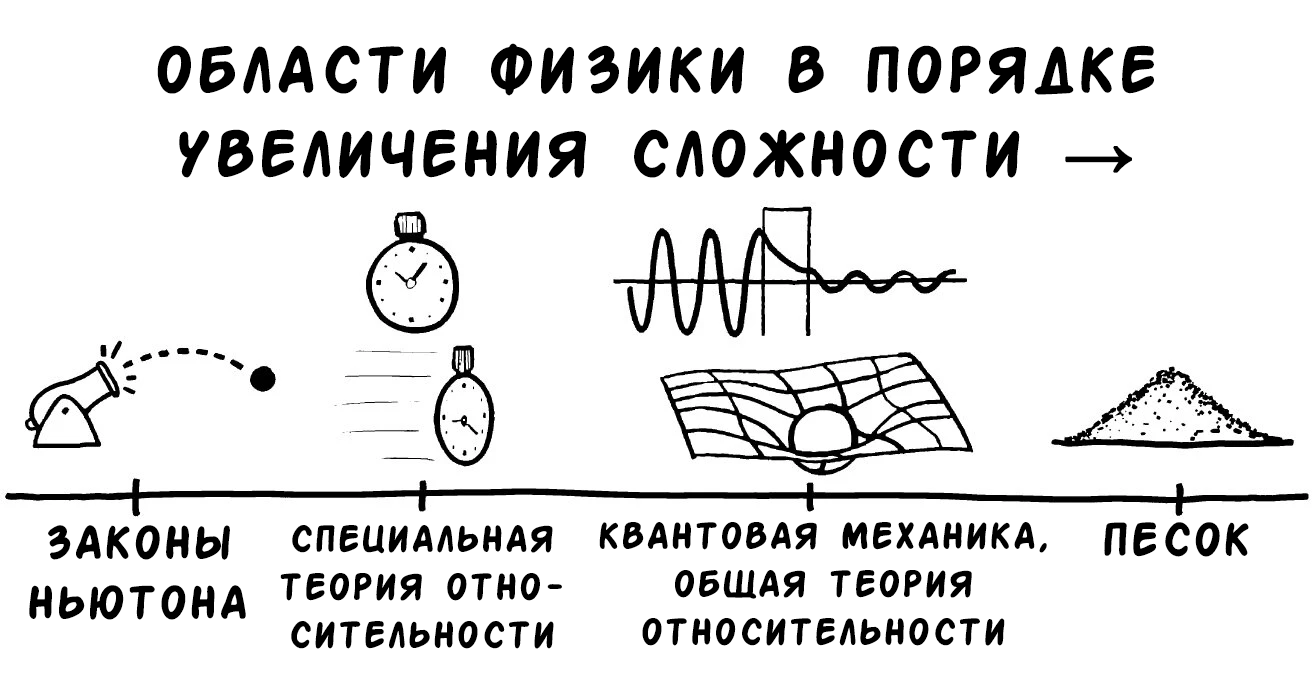For many areas of science, from landslide prediction to agriculture, understanding the physics of particle flow is essential. So far, scientists are not very good at this.
What is the softest sand in the world? Why are some types of sand softer than others?
- asks Peter S. from Brooklyn
We do not know. Nobody understands how sand works.
It sounds absurd, but in principle it is. Understanding the flow of granular materials such as sand is one of the major unsolved problems in physics.

Let's say you decide to make an hourglass and fill it with sand granules, the size and shape of which are known. You will not find a formula that can accurately predict how long sand will flow from one part of the clock to another, or whether it will flow at all. You just have to experiment.
Karen Daniels, physicist at North Carolina State University; she studies sand and other granular media (this area is called " soft matter physics "). She told me that one of the difficulties of working with sand is related to the huge number of properties of the grains - shape, size, roughness, etc. "One of the reasons we don't have a general theory is because all of these properties matter."

However, dealing with individual grains of sand is only the beginning. “You have to worry not only about the properties of the particles, but also about how they are organized,” said Daniels. Freely lying particles appear soft because they have room to maneuver. If the particles are tightly packed, they will no longer have room to move, and they will feel solid to the touch. Therefore, the surface of the sandy beach seems softer than the lower layers - the grains of sand in them are compressed, and are closer to each other.

We cannot find a general theory of sand, not because we are trying hard. For many areas of science, from landslide prediction to agriculture, it is extremely important to understand the physics of particle flow. We just don't do it very well yet.
“People working in chemical plants with machines that handle particles will attest that these machines break down very often,” Daniels said. - Anyone who has tried to fix an automatic coffee grinder knows that particles are constantly getting stuck in it. These things don't work very well. "

Fortunately, we are not moving quite by touch, and we can say something about why the sand seems softer or harder.
Typically, sand with more rounded granules will appear softer because the granules are easier to slide. Also, the smaller granules do not press as hard on the skin. But if they are very small, they will stick together due to moisture, which will make the material seem lumpy and dense.
Daniel said that the softest free-flowing material she ever touched was Q-Cell, a quartz powder that fills the cracks in surfboards. It consists of hollow granules, so it seems very light. At the same time, quartz is poorly wetted, which is why such a powder does not crumple. She compared the way this powder is poured in a bucket with very fine and dry beach sand.
The sand beach of Q-Cell would be very soft, but not very pleasant. Fine dry powder is not sand, but dust, and breathing such dust is very harmful to the lungs. The size and shape of the sand grains on an ideal beach should combine softness, fineness, lumpiness and many other properties that make the sand soft and pleasant to walk on. With so many factors to consider, it is very difficult to say what the ideal soft sand for a beach should be.
More experimental data needs to be collected.
